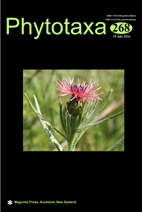Abstract
Monochoria vaginalis s.l. is an annual aquatic herb belonging to the family Pontederiaceae and having an extensive distribution in tropical and subtropical Asia, Africa, and Australia. The taxon is extremely variable and morphologically complicated. In Thailand, it is recognized as a monotypic species but displays great variations not only in vegetative but also in reproductive structures. Because of these variations, its taxonomic status and species boundary remain uncertain. Morphological investigation was conducted on 244 living specimens of M. vaginalis s.l. covering the current distribution in Thailand together with a detailed observation of 80 herbarium specimens. The holotype of M. vaginalis var. angustifolia and its related specimens were also re-examined. The present study points out that M. vaginalis can be separated into 2 morphological forms: based on leaf shapes, leaf base, number of flowers/raceme, flower arrangements, seed shapes and its longitudinal ridges. Furthermore, the living specimens were used for two cluster and one canonical discriminant analyses in a phenetic study to collect additional data for new taxonomic insights. A total of 22 quantitative and 12 qualitative characters were employed. The first cluster analysis using only quantitative characters and the second cluster analysis using both quantitative and qualitative characters displayed the same trends. The specimens separated into two distinct groups. Likewise, canonical discriminant analysis also indicated that there were two groups. The two groups can be distinguished by the petiole length of floral-leaf and peduncle length. In conclusion, the results from morphological and phenetic studies support the segregation of M. vaginalis s.l. in Thailand into two taxa.

